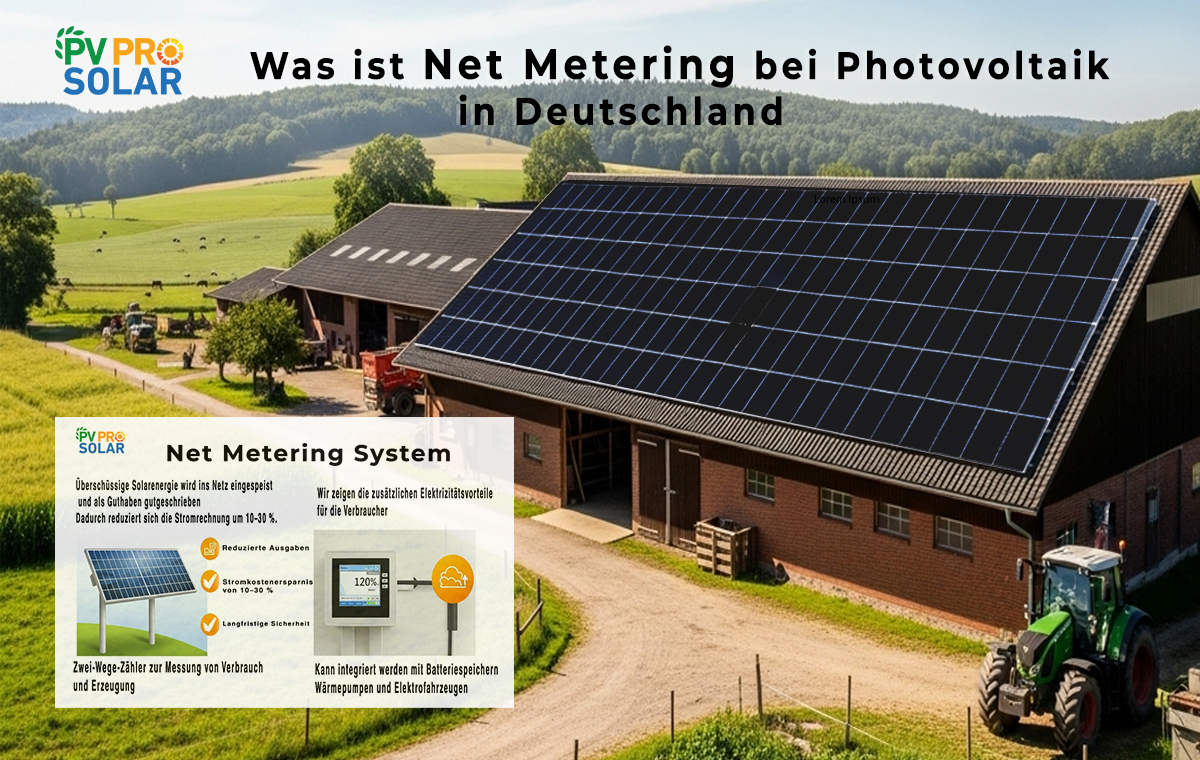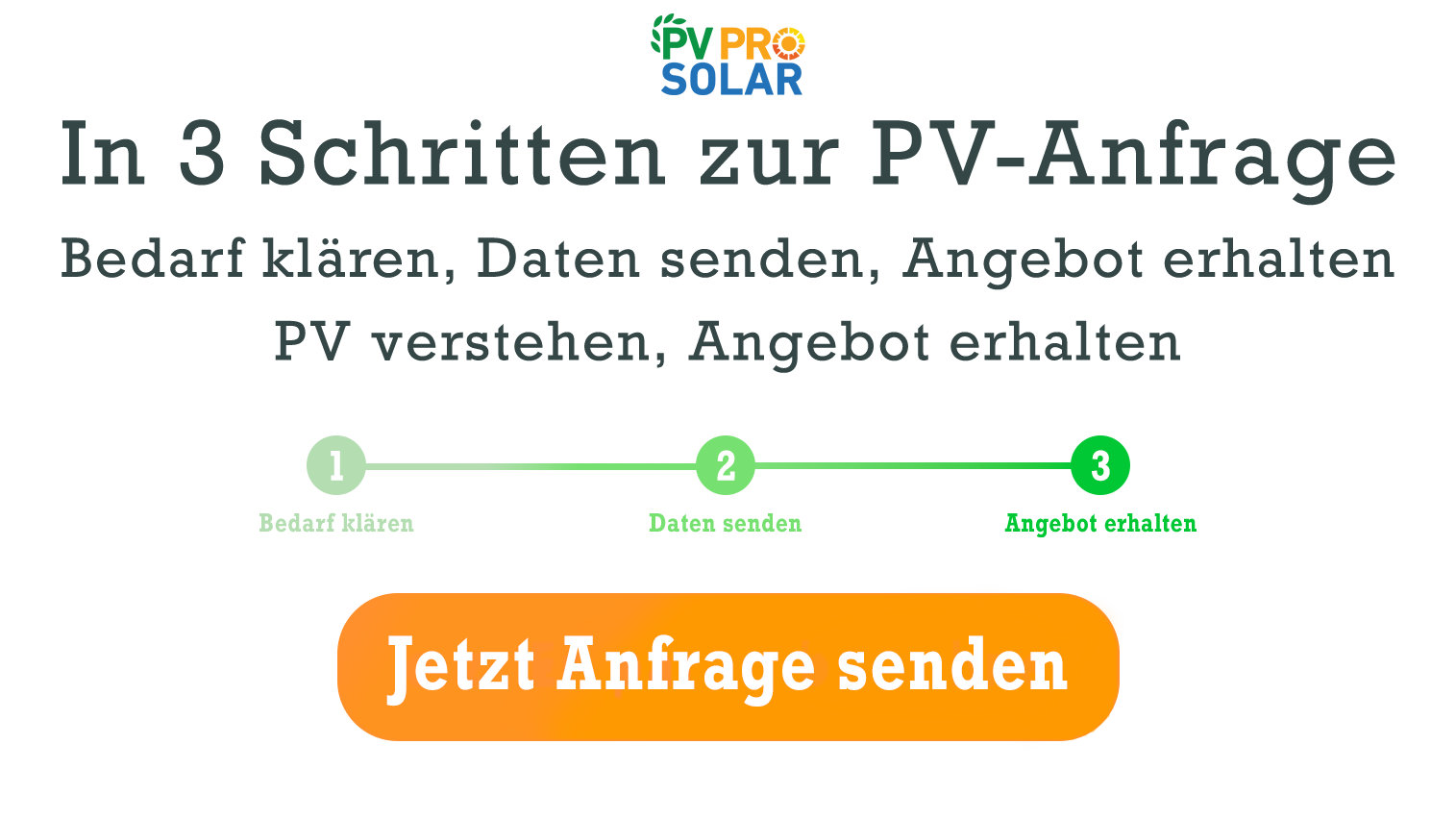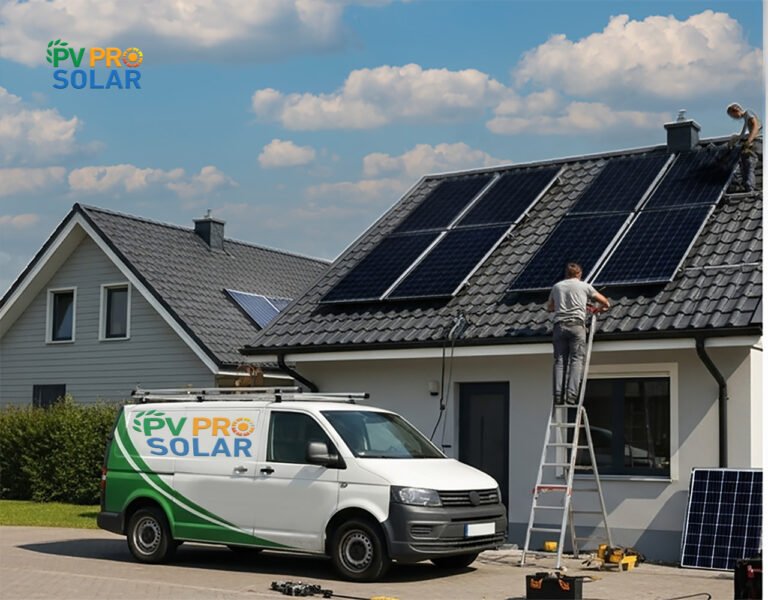What is Net Metering in a Germany solar System?
Net metering allows homeowners and businesses to feed excess solar electricity into the public grid and receive credit in return. In Germany, this system provides financial benefits and supports the energy transition. It simplifies billing between generated and consumed electricity. This comprehensive guide explains how net metering works, its advantages, requirements, technical specifications, and legal regulations for photovoltaic systems in Germany.
How does net metering work for photovoltaic systems?
Technical Operation
- A bi-directional meter measures both electricity fed into and drawn from the grid
- Excess electricity flows into the grid, and credits are applied to the electricity account
- Consumers can use these credits later to reduce energy costs
Practical Examples
- A household generates 5,000 kWh annually but consumes only 4,000 kWh. The 1,000 kWh is credited to the account
- A company in Bremen generates 50,000 kWh and consumes 40,000 kWh, leaving 10,000 kWh as available credit
Advanced Features
- Smart Metering: Real-time monitoring of energy production and consumption
- Optimized self-consumption: Battery storage can store excess electricity for later use
Benefits for households and businesses
- Immediate cost savings
- Reduced dependency on rising electricity prices
- Contribution to Germany’s decentralized energy transition
What are the benefits of net metering for homeowners?
Financial Benefits
- Reduces electricity bills by 10–30%
- Credit for excess electricity instead of immediate sale
- Long-term financial planning with stable billing models
Environmental Benefits
- Supports renewable energy adoption
- Reduces CO₂ emissions
Technical Benefits
- Can be combined with home battery storage
- Enables smart energy distribution, e.g., for heat pumps or electric vehicles
Case Study
The Schmidt family in Hannover installed a 7 kWp system. Annual savings: €1,100 through net metering and optimized self-consumption.
Who can benefit from net metering?
Private Households
- Small to medium photovoltaic systems on residential buildings
- Flexible credit usage for households with variable consumption
Commercial Enterprises
- Offices, workshops, hotels, or supermarkets
- Constant energy consumption maximizes the use of fed-in electricity
Agricultural Businesses
- Refrigeration systems, irrigation, and milking robots
- High daytime energy demand fits well with net metering
Regional Differences
- Grid operators and federal states determine requirements
- In Lower Saxony, simplified registration applies for systems under 10 kWp
Practical Example
An agricultural operation in Wolfsburg uses a 15 kWp PV system. Net metering reduces annual electricity costs by 30%.
What requirements must be met for net metering?
- Photovoltaic system: Must comply with technical standards
- Grid connection: Registration with the local grid operator
- Metering: Bi-directional meter or smart meter installation
- EEG compliance: Reporting system capacity, following legal requirements
- Technical inspection: Ensuring grid stability
Example Calculation
A 5 kWp system with feed-in <10 kW meets all net metering requirements without additional permits.
Additional Notes
- Grid operators may set specific requirements
- In some cities (e.g., Hannover), extra permits are needed for larger systems
How does net metering affect the electricity bill?
- Direct offset: Credits reduce future electricity costs
- Monthly Example:
- January: 200 kWh fed in, 150 kWh consumed → 50 kWh credited
- February: 100 kWh consumed → 50 kWh remaining, balance credited
- Annual Savings: Typically 10–30% depending on electricity price and system size
What does the Renewable Energy Act (EEG) say about net metering?
- EEG Goals: Promote renewable energy and grid integration
- Compensation: Credit for fed-in electricity
- Legal Requirements: Registration, capacity limits, documentation
- Comparison with feed-in tariff: Net metering offsets bills; feed-in tariff pays a fixed rate
Example
EEG 2023 simplifies net metering for small PV systems <10 kWp.
What technical requirements exist for net metering?
- Install a bi-directional or smart meter
- Comply with EEG technical standards
- Ensure grid stability through professional installation
- Integrate battery storage or smart controllers for self-consumption
Example
A 10 kWp system in Bremen requires a certified bi-directional meter. Smart meters simplify real-time monitoring and optimization.
How is excess electricity compensated?
- Grid operators credit fed-in electricity
- Offset occurs directly on the electricity bill
- Compensation varies by state and electricity price
- Option: Combine with battery storage for later use
Practical Example
1,200 kWh of excess electricity generates €300 credit for the following year.
What is the difference between net metering and feed-in tariff?
- Net Metering: Credit against self-consumption
- Feed-in Tariff: Fixed payment for fed-in electricity
- Net Metering Advantage: Direct reduction of electricity costs
- Feed-in Tariff Advantage: Stable, long-term income
How long does it take for a PV system with net metering to pay off?
- Depends on system size, consumption, and investment costs
- Typical payback: 8–12 years
- Calculation includes investment, maintenance, and electricity price trends
Example
6 kWp system on a single-family home: €12,000 investment, €1,200 annual savings → ~10 years payback.
Net metering offers homeowners and businesses a cost-efficient way to reduce electricity bills and actively support the energy transition. With clear EEG regulations, technical standards, and smart meters, excess electricity can be optimally used. Checking regional requirements and grid operator conditions ensures maximum savings. Net metering in Germany provides a practical, sustainable solution for leveraging solar energy while contributing to nationwide renewable energy goals.
The missing electricity is drawn from the grid and billed at regular rates.
Yes, with a battery, you can store excess electricity for later use, increasing grid independence.
Systems up to ~10 kWp generally qualify for net metering in Germany.
In many federal states, yes, they simplify billing and monitoring. What happens if I consume more electricity than my PV system generates?
Can I store my excess electricity?
What system size is suitable for net metering?
Are smart meters mandatory for net metering?









